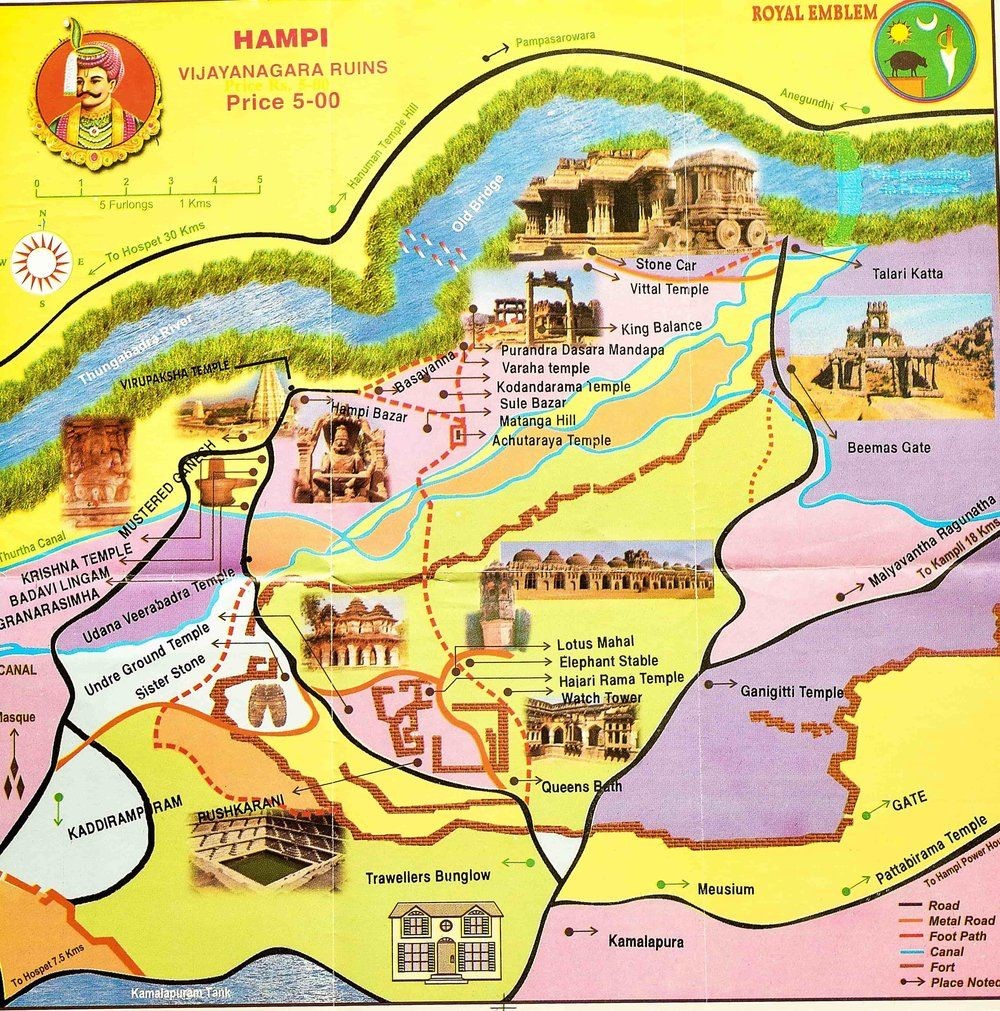




Disclaimer: Copyright infringement not intended.
A major fire at Maharashtra historic Devgiri Fort in April 2025 has triggered an ASI led investigation into ecological damage & heritage preservation highlighting urgent need for disaster preparedness at Indian UNESCO nominated sites.
Location Devgiri Fort also known as Daulatabad Fort is located in Aurangabad district of Maharashtra India. It is situated about 13 kilometers north of city of Aurangabad.
Historical Significance
The fort is an iconic symbol of Yadava dynasty military architecture & their political power.
It was initially built by Yadava dynasty in 12th century & was later expanded by other rulers such as Tughlaqs who renamed it Daulatabad meaning City of Fortune.
The fort became capital of Tughlaq dynasty for a brief period during reign of Muhammad bin Tughlaq in 14th century.
Tughlaq shifted capital from Delhi to Daulatabad though this move turned out to be disastrous due to logistical challenges & resistance from people.
Architecture
The fort is famous for its advanced & strategically crafted defenses including thick walls, a unique water system & a highly protected approach to main entrance.
The fort structure is a combination of Hindu, Islamic & Central Asian architectural elements reflecting cultural influences of period.
The fort has multiple gates some of which are very narrow & require careful navigation adding to its defensive characteristics.
One of fort most unique features is its zigzag entry passage designed to confuse enemies & make it difficult for them to attack in a direct manner.
The fort also contains several watchtowers, a massive reservoir & a large moat around perimeter.
Strategic Importance
The fort was located at a high vantage point & was nearly impossible to attack successfully due to its natural defenses including steep hills & deep moats.
During reign of Yadava dynasty fort played a pivotal role in guarding their kingdom against external threats.
It was later a key fortress for Tughlaqs & continued to hold military importance throughout subsequent periods.
|
Category |
Details |
|
Date of Construction |
12th Century Built by Bhilla Mahadeva of Yadava Dynasty. Later expanded by Muhammad bin Tughlaq during 14th century after he shifted his capital to Daulatabad. |
|
Architectural Style |
Combination of Hindu & Islamic architectural styles influenced by Central Asian military architecture. Notable for its military engineering & defensive innovations. |
|
Main Entrance |
Khilji Gate One of fort primary entrances with a massive, robust structure designed to withstand enemy attacks. The Andheri Gate ( Dark Gate) is another narrow & difficult to navigate entrance. |
|
Fortifications & Walls |
Stone Walls The fort is surrounded by thick & high stone wall built to withstand sieges. Some parts of fort walls are more than 12 meters (40 feet) tall. |
|
Defensive Features |
1. Zigzag Pathway A winding, narrow entrance pathway that disorients invaders. |
|
Watchtowers |
Chand Minar A 30-meter tall tower built by Ala-ud-Din Bahman Shah of Bahmani Sultanate. This tower is one of most visible structures in fort & served as both a watchtower & a symbol of fort’s power. |
|
Water Supply System |
The fort has a sophisticated water storage system including a large reservoir (Nahar) that collects rainwater & deep wells within fort. The water system was crucial for sustaining fort during long sieges. |
|
Temples & Religious Structures |
1. Jami Masjid A mosque built during Tughlaq period showcasing a blend of Islamic & local Deccan architecture. |
|
Palaces |
The fort houses a palace complex where Yadava kings & later Tughlaq rulers resided. It includes administrative buildings & royal chambers. |
|
Chand Minar |
This 30-meter-tall tower was built in 14th century by Ala-ud-Din Bahman Shah. The tower is an important landmark & a symbol of fort’s architectural grandeur & military significance. |
|
Defense Mechanisms |
1. Narrow Entrances Designed to slow down progress of enemy soldiers. |
|
Historical Importance |
The fort played a significant role in Yadava Kingdom serving as a stronghold & defensive center. Later, Muhammad bin Tughlaq moved capital of his Sultanate from Delhi to Daulatabad for a brief period in 14th century. |
|
Nearby Attractions |
1. Ellora Caves (30 km away) Famous for rock-cut temples & monasteries. |
|
Fort Name |
Location |
Period of Construction |
Dynasty/Empire |
UNESCO Status |
Significance |
|
Red Fort (Lal Qila) |
Delhi |
1638-1648 |
Mughal Empire |
UNESCO World Heritage Site |
Symbol of Mughal power, significant for its Indo-Islamic architecture, includes Diwan-i-Aam, Diwan-i-Khas & other iconic structures. |
|
Qutb Fort |
Delhi |
12th century |
Delhi Sultanate |
UNESCO World Heritage Site |
Known for its stunning Qutb Minar, it marks rise of Islamic architecture in India. |
|
Agra Fort |
Agra, Uttar Pradesh |
1565-1573 |
Mughal Empire |
UNESCO World Heritage Site |
Historic military structure, significant for Mughal military architecture & later as residence of Mughal emperors. |
|
Chittorgarh Fort |
Chittorgarh, Rajasthan |
7th century onwards |
Mewar Kingdom |
UNESCO World Heritage Site |
One of largest forts in India known for its historical significance in Rajput resistance including battles of Rana Kumbha & Rani Padmini. |
|
Jaigarh Fort |
Jaipur, Rajasthan |
1726-1734 |
Rajput Kingdom (Jaipur) |
UNESCO Tentative List |
Famous for housing world largest cannon on wheels (Jaivana), important for Rajput military architecture. |
|
Gwalior Fort |
Gwalior, Madhya Pradesh |
8th century onwards |
Various (Gupta, Tomar, Mughals) |
UNESCO Tentative List |
Known for its massive walls, palaces & temples symbolizing grandeur of ancient Indian military & architectural achievements. |
|
Daulatabad Fort |
Aurangabad, Maharashtra |
12th century onwards |
Yadava Dynasty, Tughlaq Empire |
UNESCO Tentative List |
Historically important for its military architecture & strategic significance during Yadava dynasty & Tughlaq rule. |
|
Ranikot Fort |
Sindh, Pakistan |
17th century |
Baloch tribes |
UNESCO Tentative List |
Known as Great Wall of Sindh it is one of largest forts in world famous for its extensive defensive walls & watchtowers. |
|
Fort Kochi |
Kochi, Kerala |
16th century |
Portuguese, Dutch, British |
UNESCO Tentative List |
A significant colonial trading post reflecting history of European colonization in India with unique architectural & cultural influences. |
|
Mehrangarh Fort |
Jodhpur, Rajasthan |
1459 |
Rajput Kingdom (Marwar) |
UNESCO Tentative List |
Known for its stunning architecture fort overlooks blue city of Jodhpur & holds historical significance in Rajput military heritage. |
Yadava dynasty ruled Deccan region from 12th century until their downfall in 14th century. Their capital was initially at Devgiri (later Daulatabad) located in modern day Maharashtra.
The Yadava dynasty roots trace back to 9th century but they rose to prominence under Bhillama V in early 12th century.
The Yadavas were originally feudatories of Western Chalukyas but they eventually established their independent rule.
Bhillama V (1178 to 1192)
Founder of Yadava kingdom of Devgiri.
Built up kingdom military & administrative structure.
Singhana (1210 to 1247)
Famous for his military expansion & patronage of art & culture.
Strengthened kingdom & its infrastructure contributing to kingdom prosperity.
Raja Ramachandra (1271 to 1309)
The most famous ruler of Yadava dynasty he was a patron of arts & culture.
Known for his liberal administration & for stabilizing kingdom.
He made significant advancements in building kingdom's infrastructure including construction of famous Ramachandra Temple.
The Yadava dynasty fell to Delhi Sultanate in 1318 when their last ruler Harihara was defeated by Delhi Sultan Muhammad bin Tughlaq.
After fall of Devgiri Tughlaqs briefly made region their capital renaming it Daulatabad which saw political chaos & a migration disaster.
Military Architecture The Yadavas were known for their military fortifications & construction of Devgiri Fort is one of their prime achievements.
Art & Culture The Yadavas were patrons of literature & architecture. They were instrumental in promoting literature in Marathi language & in development of temples & forts that stand as cultural landmarks.
Religious Tolerance The Yadava rulers were generally tolerant of different religions though they themselves followed Hinduism.
For more such articles, please refer to IAS GYAN
Sources:
|
PRACTICE QUESTION Q. Discuss role of Devgiri Fort in rise & fall of Yadava dynasty & administrative experiments of Muhammad bin Tughlaq. |











© 2025 iasgyan. All right reserved